|
A few years ago I stumbled upon a Ted Talk that caught my attention and got me thinking about the way we value spaces. It got me to thinking about the sorts of places that I enjoy being in as opposed to places that make me feel like eating rat poison and then jogging to make my heart beat faster so as to speed the toxins to my vital organs. And for the first time I think I realized why certain parts of town made me feel comfortable while others made me twitch nervously. If you care to watch the talk yourself, you can find it here. You are hereby warned there is profanity in it, so if such talk offends you, you might want to pass. I want to talk about an issue in particular. But this article isn't going to be about taking a side. I just want to ask some questions. To be honest, some of them are questions for me. There is a strip of land in Rome, Georgia that is currently being discussed as a possible site for development of apartments and retail space. There is also discussion of making it parkland that would connect the existing municipal park with one of the city's "Seven Hills". And now the details. 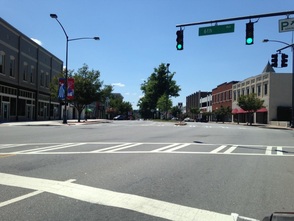 Broad Street, Downtown Rome Broad Street, Downtown Rome The crown jewel of Rome is Broad Street. Unlike so many smaller Southern towns, this central business district is a vibrant locale where people live, work, and play. Stores, offices, restaurants, bars, all these make the second widest main street in Georgia a lively place for as much as 20 hours of the day. Over the last several years, Broad Street, and the surrounding "Between the Rivers" historic district, have been restored, rejuvenated, and made into a beautiful and integral part of the community. It's the sort of meaningful space that people find themselves drawn to, not because it's the cheapest or only place, but because they actually want to go there. 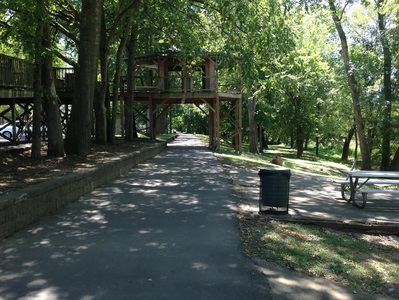 The river walk through Ridge Ferry Park The river walk through Ridge Ferry Park Just a short distance up the river walk along the Oostanaula from Broad Street is Ridge Ferry Park. The river walk itself follows an old Cherokee road and eventually connects to Chieftain's Museum, former home of Cherokee Principal Chief Major Ridge, and then continues on to the home stadium of the Rome Braves, Atlanta's minor league affiliate. This area is a wise use of flood plain and is home to concerts, festivals, disc golf, educational resources, playgrounds. It's a well-planned example of urban green space that people use regularly. Families, school field trips, a farmers market, and much more can be found here. But most importantly, it's a good place for the Oostanaula to overflow its banks when such a place is needed. The park is usable but everything there is designed to survive being under water for a spell. A river flowing downtown is a blessing, but three of them at flood stage can be a pretty heavy curse. So areas are needed to take up some of this water. Ridge Ferry helps in that role. 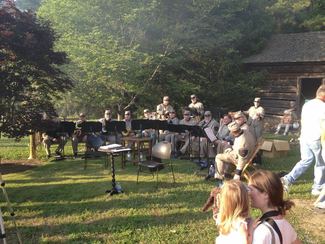 The Eighth Regiment Band performing on Jackson Hill The Eighth Regiment Band performing on Jackson Hill Overlooking the downtown area, as well as Ridge Ferry, stands Jackson Hill. Jackson teams up with Blossom, Lumpkin, Neely (Clocktower), Old Shorter, Myrtle, and Mt Aventine, to make up the seven hills from whence Rome took its name, citing the seven hills of ancient Rome. Jackson Hill is home to the civic center, the visitor information center, miles of trails to be used for hiking and mountain biking, a large flag pole that flies the US flag, as well as Ft. Norton. Ft. Norton was built during "The War" as a defensive position to help defend Rome in the event of attack. All that remains of the fort are entrenchments that were dug over 150 years ago. The fort is the site of living history events and could serve to further historic tourism in Rome. This unique area so close to downtown was carved for war but now is a haven for nature. I myself have seen several deer at the fort, less than a mile from City Hall. Elsewhere in town can be found the signs of modern development. Development is important because it creates jobs, helps develop the local economy, and provides goods and services to the populace. Without development, the area will stagnate and the community will die. But what should determine the details of development? Often development becomes old, less attractive, and then deteriorates. It loses its appeal and tends to take away from the community more than it contributes. These once desired places become eyesores. 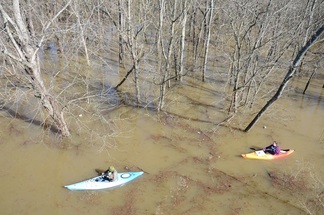 Paddling a flooded Burwell Creek (Photo courtesy Joe Cook) Paddling a flooded Burwell Creek (Photo courtesy Joe Cook) The strip of land in question isn't always land. In fact, some of it never is. Burwell Creek cuts through this strip of land as it eases its way to the Oostanaula at Ridge Ferry. In times of flood, this area is underwater long before the park goes under. Except in the driest times, the true banks of Burwell creek can be hard to distinguish from the rest of the wooded area. Developing the land for business would require rerouting the creek and filling land that currently floods. If the land becomes parkland, as at least one independent study has suggested it should, it would connect Ridge Ferry, and therefore Broad Street, to Jackson hill as one continuous park in the downtown area. So the questions are, should this land be developed? Should it become parkland? Should it remain a largely unused strip of woods in the middle of town? There are arguments for all three answers. But the questions I find myself asking are, if it is to be developed, what should go there? Should it have a certain caliber that would keep it from becoming a vacant eyesore in a matter of a few years? What would such a place look like? What would make such a place meaningful? Risk vs. Reward. That is the name of the game.
3 Comments
Ellen S Kilgo
8/11/2015 02:53:15 pm
The land should be preserved as parkland. The parks in Rome are an asset & allow for all types of activities to be held on the sites. Family activity to business it needs to be preserved, definitely not paved over. All the extreme flooding that is happening in cities all over the US is a result of passing over land that should be allowed to remain a flood plain. Also will likely be found to be causing climate change. We develop areas so that all the rain water drains off... So these developed areas have no areas for water to soak into the ground naturally while other areas are then prone to repeated flooding. Think about it, in the past every land owner had lakes & ponds for water such as was need for livestock. Now we must develop a system of drains to force rain water out of the developed paved over areas. As the song says "we pave over paradise".
Reply
8/12/2015 01:07:56 am
Ellen, thanks for the response and for sharing your opinion! We're glad to offer it our consideration. This is an important conversation to have.
Reply
Joan Ledbetter
8/12/2015 05:35:33 am
This land should be a park (usable when not flooded; there to assist nature, as it was intended, when there are flood waters).
Reply
Leave a Reply. |
Sam B.Historian, self-proclaimed gentleman, agrarian-at-heart, & curator extraordinaire Social MediaCategories
All
Archives
November 2022
|


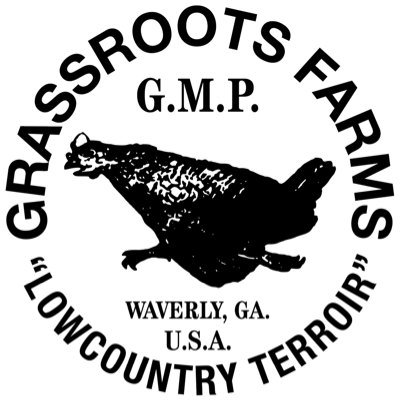
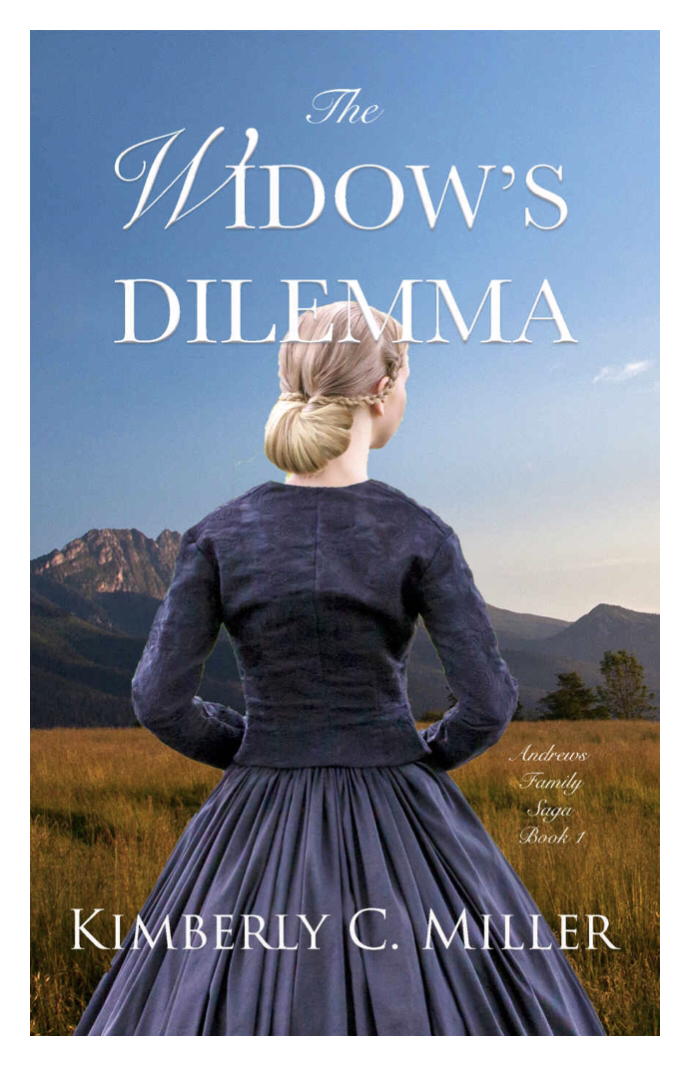
 RSS Feed
RSS Feed
